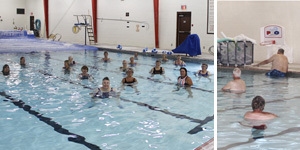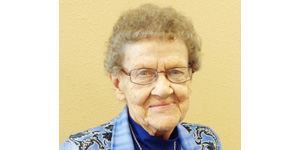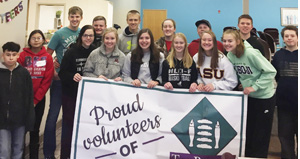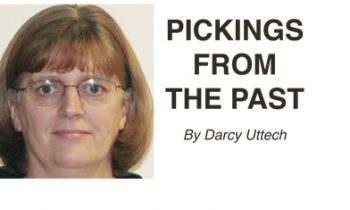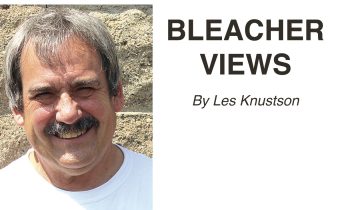“ Don’t cry because it’s over, but be happy because it happened”. Dr. Suess
My husband, Dan, used to tell me this in different words…until one day we saw that it was actually a famous quote from the children’s storyteller himself! It is coming to me strongly this week as we prepare to head back to the frozen northland. We have so enjoyed the sun and warmer temps of Yuma, AZ, the past couple weeks. Our oldest daughter, Ranell, and my brother, Jeff, and his family live in this almost southern-most city of Arizona. We have also connected with some cousins and childhood friends while hanging out down here!
Our time here has provided time to visit, enjoy some scenic rides into the “farm” country around Yuma, morning walks in the sunshine, afternoon movies at the theatre a couple times, and several times trying out meals in new restaurants to us!
We spent two days in the San Diego area, and enjoyed one of the days at the San Diego Zoo Wild Animal Safari Park. The Australian section with the kangeroos and their babies, along with the Wallabies was so fun. The space was partially open so the kangeroos were free to run or jump in front of us as we walked on the pathway. Watching the two new baby elephants was equally as fun, and then we thoroughly enjoyed the tram ride through the African hills and grasslands. One mom had just given birth to a little male giraffe. Have you ever seen a Rhino up close? Wow, those are some big creatures!
Our final adventure before packing to return home was Friday at Castle Dome Mines Museum and Ghost Town. It is located about 45 minutes out of Yuma, in the middle of the desert, with the final ten miles of travel on very bumpy rocks and gravel…not really a road, but a path of sorts. We were expecting to see some weather beaten buildings of a ghost town, Castle Dome City, established in 1864, but it turned out to be a four hour adventure that took us through parts of the old mine and all around to reminisce in the many typical buildings of a late 1800 to mid 1900 mining town. Some of the structures that intrigued us were the mill and the original boiler, mercantile, church, five saloons, bank, little cafes, the general store and even a school.
In many of the saloons and other places we saw beautiful glass bottles and dishes from that era. We learned that for a long time folks preferred clear glass. Glassmakers had to be content with green glass since that is how it turned out. In the 1930’s selenium was used to make glass clear…and it was, until the sun would turn it yellow…making it known as depression glass!
In the museum buildings we were interested to see how Levi jeans were the mainstay of the working miners. The early ones from 1880 to 1900 did not have belt loops, but held up only with suspenders. Some on display were dotted with white spots which came from the wax in the candles along the mine walls used for light. These Levi Strauss jeans were found at the 150 ft. level in the Castle Dome Mine.
The first thing Castle Dome folks did was to build a cistern to catch every drop of water possible. One of them near the Sonora mine was full of cattails…but it was said that every part of a cattail is edible! One of the last mine caretakers reported that his dog would not drink his water until he placed a chunk of flourite into the water. ( Interesting that it is the source of flouoride that is good for our teeth!)
We rode out to the mine with eight others on the tour in an open air bus, stopping to see the original sites along the way, intermingled with desert plants and scenery. It is very much like it has looked since before the mine ever opened. One thing we didn’t see were the waves of quail that were reported to run thick and wild over the desert hills.
Two of my favorite desert plants that we saw were the Palo Verde tree and the giant cactus, Saquaro. The Palo Verde is a bushy tree that become large and shady. Their flowers are yellow and bloom in the spring. Then their “beans” are made and they are a light green the rest of the year. Saquaros can be as tall as 50 feet, 2 1/2 feet in diameter, and weigh 9 tons. They grow slowly, but can produce up to 100 fruits in a season. The fruit is bright orange, sweet, and has black seeds. The beautiful big white flowers bloom in May and June.
From the mine at Castle Dome, the ore responsible for the mining town averaged 45 ounces of silver per ton. Lead, which was the bi-product, was solely sought after during WWI and WWII.
When we got to the opening of the mine itself, we transferred into a smaller motorized cart that carried us one hundred feet under the ground. We rode for part of the tour and walked some of it. One of the places we got to see was the blacksmith shop. They were the men who kept the mines going and the horses shod. There were 300 mine shafts and each one needed the service of a blacksmith. Their primary duty was to keep the drill bits sharpened.
When a miner died in a mine, his boots were hung upside down, on the rafter nearest where his soul left his body. Thus he was remembered.
A mine was a place I said I would never go, because I tend to be pretty claustrophobic, but I am glad I did. Very interesting to see what the life of a miner would be like. And the history learned gave us a new appreciation for the harshness of the job it was.

